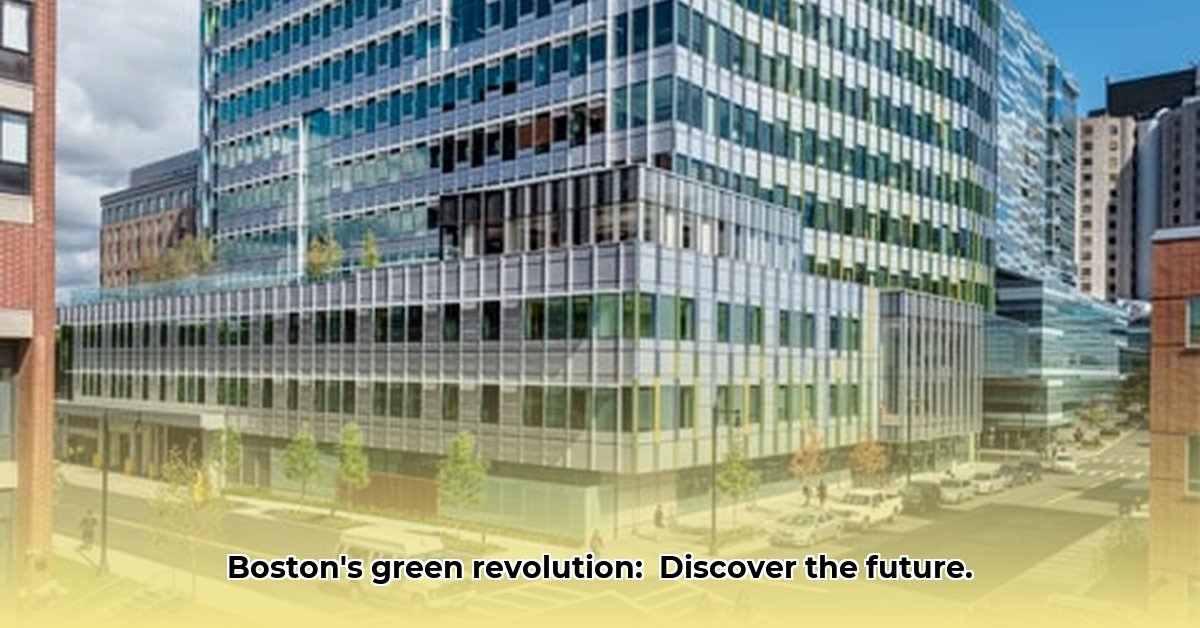
VHB Boston is a key player in the city's transformative urban development, acting as more than just an engineering firm; they're shaping a sustainable and livable future. This in-depth analysis explores VHB's integrated approach, highlighting its strengths while acknowledging the challenges inherent in Boston's complex landscape. We delve into their strategies, examining both their successes and the risks they navigate to contribute to a better Boston.
VHB's Integrated Approach: A Collaborative Ecosystem
VHB's competitive advantage lies in its integrated approach. Unlike firms that compartmentalize services, VHB brings together engineers, planners, environmental specialists, and other experts under one roof. This collaborative model offers significant efficiencies. Consider a project requiring architectural design, environmental impact assessment, and traffic engineering; with VHB, clients manage a single, cohesive team, eliminating coordination complexities and saving both time and resources. This integrated approach is particularly valuable in a fast-paced environment like Boston's, where projects face tight deadlines and intricate regulatory frameworks. Their strategic location near South Station furthers their accessibility and enhances project collaboration.
Navigating Boston's Urban Landscape: Relationships as Infrastructure
Developing in Boston presents unique challenges. The city's rich history, dense urban fabric, and intricate regulatory system demand a nuanced understanding. VHB excels in this environment, not merely through regulatory expertise, but through cultivated relationships with key stakeholders. These include local officials, community groups, and other influential players in Boston's development ecosystem. This fosters collaboration and consensus-building, smoothing the path for project approvals and ensuring community acceptance.
Key Projects and Technological Innovation: Building Smarter, Not Harder
While specific project details remain confidential at this time, VHB's commitment to technological innovation is evident. Advanced computer modeling and data analysis are almost certainly crucial components of their workflow. This allows for efficient and sustainable designs, likely leading to faster project completion times, cost savings, and reduced environmental impact. The potential for utilizing this technology to optimize building placement, minimizing disruption to existing infrastructure, showcases VHB's forward-thinking approach. Further investigation into concluded projects will provide concrete examples of this impact.
Challenges and Opportunities: Adapting to a Dynamic Market
VHB, like any successful firm, faces ongoing challenges. Attracting and retaining top talent in a competitive market requires proactive strategies. Furthermore, Boston's rapidly evolving urban development landscape necessitates constant adaptation to emerging trends and regulatory shifts. However, these aren't insurmountable obstacles; they represent opportunities. Boston's increasing emphasis on sustainability aligns perfectly with VHB's core values, creating significant potential for future growth. Their ability to adapt and innovate will be key to continued success.
Risk Assessment and Mitigation: Proactive Problem-Solving
VHB’s success relies on proactive risk management. A robust assessment process likely identifies and mitigates potential challenges. Consider these example risk factors and potential mitigation strategies:
| Risk Factor | Likelihood | Impact | Mitigation Strategy |
|---|---|---|---|
| Losing top talent to competitors | Medium | High | Competitive salaries, benefits, professional development |
| Unexpected regulatory changes | Medium | High | Close monitoring of regulations, proactive engagement |
| Technological advancements | Medium | Medium | Ongoing investment in training and new technologies |
| Project delays/cost overruns | Medium | Medium | Rigorous project management, risk mitigation planning |
| Negative public perception | Low | Medium | Effective communication, community engagement |
This proactive approach minimizes disruptions and ensures project success.
The Regulatory Landscape: Compliance as a Competitive Advantage
Massachusetts' stringent regulatory environment, particularly regarding construction and environmental impact, necessitates meticulous compliance. For VHB, this isn't just a legal imperative; it's a competitive advantage. Their deep understanding and proactive engagement with regulations minimizes delays and potential legal issues. This expertise significantly differentiates them in the market.
Stakeholder Collaboration: Building Consensus, Building Boston
VHB's collaborative approach emphasizes strong relationships with government agencies, private developers, and the community. Open communication, transparency, and a shared vision ensure projects align with the city's goals and community needs. This collaborative spirit mitigates potential conflicts and leads to more efficient project execution.
Future Outlook: Sustainable Growth in a Growing City
VHB's future in Boston appears promising. Their integrated model, technological expertise, and unwavering commitment to sustainability position them for sustained growth. However, maintaining this momentum requires continued innovation, adaptation to shifting urban development trends, and leadership in sustainable practices. VHB is not merely constructing buildings; they are actively shaping a more livable and environmentally responsible city. Their continued success is integral to Boston's future development.